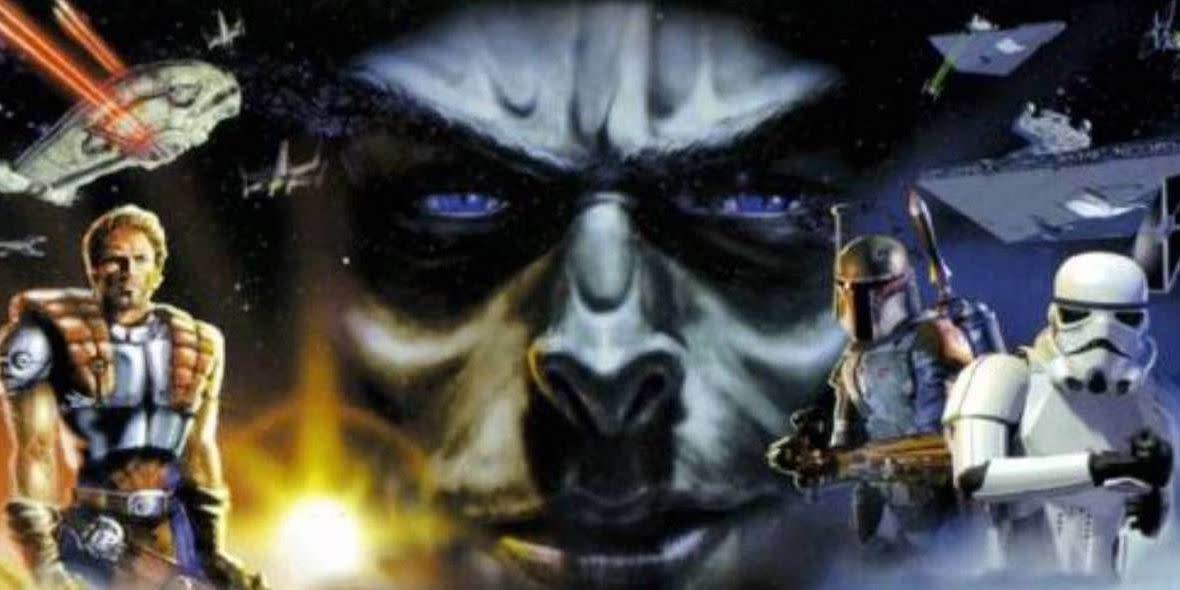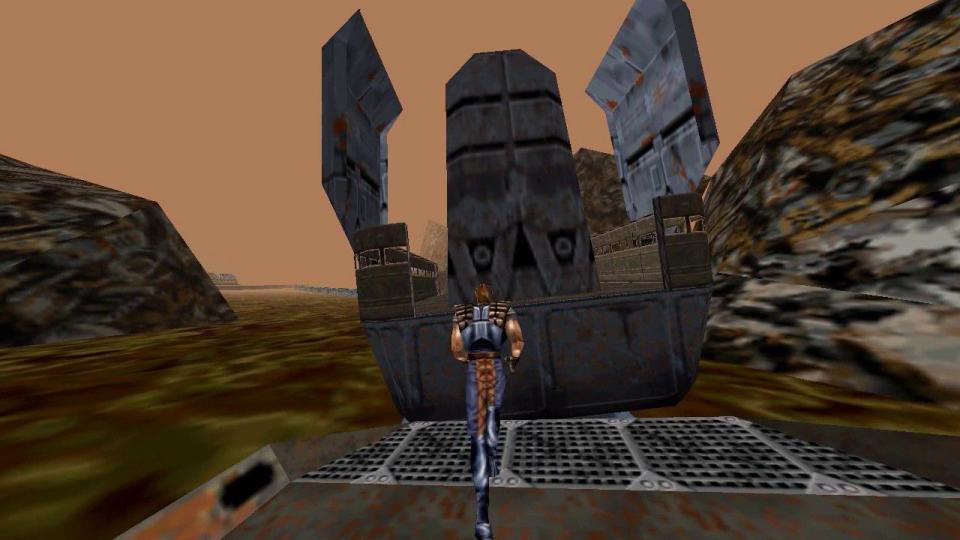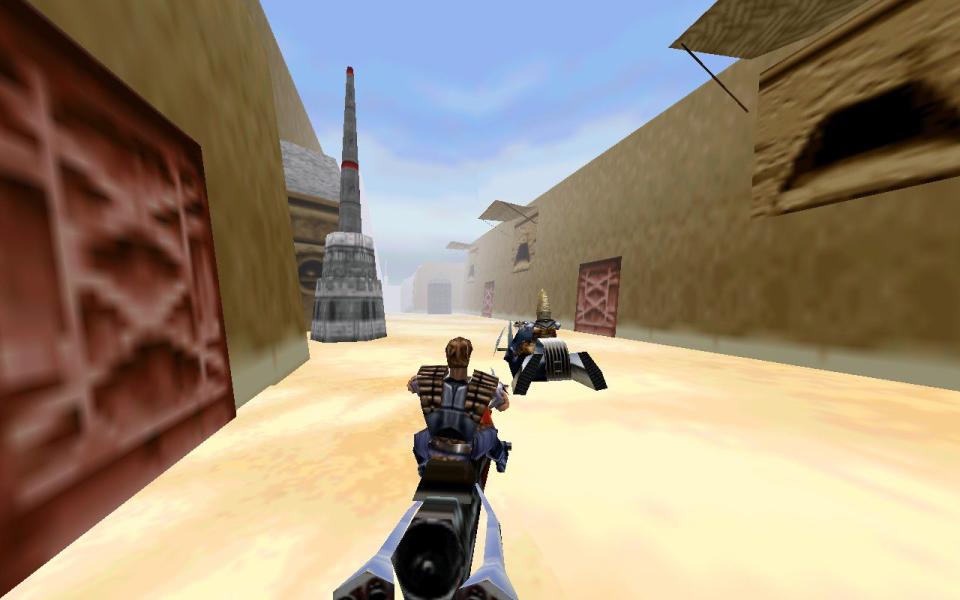Remember 'Shadows of the Empire'? We Do.

If you grew up a Star Wars kid in the late nineties, you may have been lucky enough to get an early lesson in profanity while an older sibling made their way through the infuriating N64 classic, Shadows of the Empire.
Like many early console games, the 1996 3rd-person shooter from LucasArts could fill your heart with the excitement of this bold new medium of 3D storytelling–only to crush your soul with merciless gameplay, chunky graphics, and a control scheme that seemed designed for the hands of a billy goat.
But while kids today are suiting up in their Chewbacca masks and Lando capes to see the origins of Han Solo play out on the big screen, many old-school fans can’t help but recall the exploits of Dash Rendar, the main character in Shadows, and the franchise's original smuggler story.
Dash is uniquely recognizable in the Star Wars universe, not only for his maroon hair and puffy vest, but as one of the few characters who had been afforded a video game, comic book, novel, and toy set, even though he’d never been featured in an actual film.
Shadows of the Empire followed Dash and Leebo, his humanoid partner in crime, traversing the galaxy in a frisbee-shaped ship that in no way, shape, or form resembled the Millennium Falcon (it was wider and had a flatter hull!). An early experiment in broadening a franchise’s narrative universe, Shadows picks up right around the time Han Solo is encased in carbonite towards the end of Empire Strikes Back.
Dash, who is first introduced in the game as a fellow smuggler who once nearly bested Solo in a spaceship race, is now tasked with retrieving Solo’s frozen body from Boba Fett, and thus the ginger mercenary becomes, for better or for worse, the stand in for Harrison Ford’s iconic character.

In one memorable level, Dash is dropped on a garbage planet, hunting down the robotic bounty hunter IG-88. Fans of the game likely still have Rendar's pained, synthetic grunt burned into their cerebrum, because, boy, was this level a bitch. Jumping over the obstacles of this trash planet on a big dumpster train hurtling toward disaster was close to impossible, and unlike games these days, when you got a Game Over in Shadows, you actually had to start the level over from scratch. With the primitive joystick of the hand-cramping N64 "wavebird" controller, and the bizarre, obstructive third-person camera angles, this trash train sequence was, well, trash, and somehow from there, the game just got harder.
Perhaps you could say that Shadows of the Empire harkens to an earlier, more pure era of gaming, when players were awarded for their patience and focus, rather than given participation trophies for playing and replaying a single challenge until completion. But, the storied history of difficult video games shows us that hardness need not be a crutch for enjoyment.
Tough games like Megaman, Battletoads, or Punch-Out! proved early on that all players, regardless of skill level, need to be offered satisfying experiences, and that a particularly challenging sequence is only as good as its eventual reward. Other than a few cut-scenes and a rocket pack, Shadows seems more concerned with punishing the player than granting any sense of gratification for extremely burdensome gameplay.
All of this is not to say that Shadows of the Empire is a bad game, though. For many of us, it was an exciting step forward for the medium.
Steeped in the rich lore of Star Wars, the game represented, especially for a Nintendo title, an early entry into a darker, more narrative-based world of video game storytelling. A game being dark or "mature" is not enough to make it good, but Shadows deserves acclaim because it eschewed the cartoonish fad of more popular titles like Super Mario 64 or Space Station Silicon Valley, favoring plot and consequence over nonsensical playtime.

Since Shadows of the Empire was immersed in the layered narratives of the franchise's existing universe, everything in Dash’s journey lent itself to a larger picture. When you were hunting Boba Fett, you knew that the fate of Han Solo was at stake. It was Luke Skywalker who needed your help when you chased down that Swoop Bike gang on Mos Eisley. And when you infiltrated Xizor’s Palace in the game’s ending, you became aware that Dash Rendar was not just some insignificant, throwaway protagonist, but that his story had deep consequences for the franchise overall.
In the end, Dash, presumed dead, falls short in his bid to save Princess Leia and destroy the treacherous Black Sun. A chilling end for a piece of media that’s intended for children–but perhaps more tragic here is the fate of the Shadows story overall.
When Disney purchased Lucasfilm back in 2012, they decanonized the Expanded Universe, effectively canceling the Shadows of the Empire story entirely. For now. (Sharp-eyed Star Wars Rebels fans spotted Rendar's ship zipping by in Season 3, though it was alleged to just be a misleading coincidence.)
With chatter around Solo sparking the internet into lightspeed, I can’t help but think of the game's secret ending, which was unlocked by completing the game on a harder difficulty.
As Dash escapes to hyperspace after everyone assumes him dead in battle, he tells his co-pilot, "It's good to be remembered as a martyr without actually being dead, wouldn't you say?"
See you when we see you, Dash.
You Might Also Like

